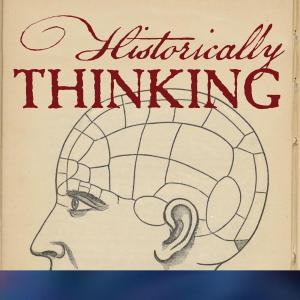Historically Thinking

Episode 338: Rivals
“The scientific community is by any measure a very strange kind of community”, writes my guest. “For starters, no one knows who exactly belongs to it... Its members are a miscellany of individuals but also of disparate institutions…Nor does it have a fixed location. …the village conjured up by the term “scientific community” is scattered all over the globe and its inhabitants meet only occasionally, if at all. Far from living in neighborly harmony or even collegial mutual tolerance, the members of this uncommunal community compete ferociously and engage in notoriously vitriolic polemics … Although modern science has been called the locomotive of all modernity, the scientific community more closely resembles a medieval guild…” Given this, one is bound to ask how precisely this scattered contentious stratified “community” even exists, let alone cooperates. Yet cooperation has been a continuous strand uniting modern science. Lorraine Daston has described the growth and mutations of that community in her new book Rivals: How Scientists Learned to Cooperate. She is the Director Emerita of the Max Planck Institute for the History of Science in Berlin, visiting professor in the Committee on Social Thought at the University of Chicago, and permanent fellow at the Berlin Institute of Advanced Study. For Further Investigation Lorraine Daston, Rules: A Short History of What We Live By Here is an excellent conversation with Lorraine Daston about her book Rules which, unfortunately, was not a conversation on Historically Thinking We've had numerous conversations about topics within the history of science over the years. Here is a list. The featured image below is of the Fifth Solvay Conference, at which every luminary of past and future physics seems to have been gathered. Hopefully you recognize the bushy-haired man with the big mustache more or less in the center of the first row. Less identifiable than Albert Einstein: Max Planck (first row, 2nd from left); Marie Curie (first, row 3rd from left); Niels Bohr (second row, extreme right); Paul Dirac (second row, fifth from left); Ernst Schrödinger (third row, sixth from right); Wolfgang Pauli (third row, fourth from right); Werner Heisenberg (third row, third from right). And many more who deserve mention, which you can find here.






 Visit Podcast Website
Visit Podcast Website RSS Podcast Feed
RSS Podcast Feed Subscribe
Subscribe
 Add to MyCast
Add to MyCast